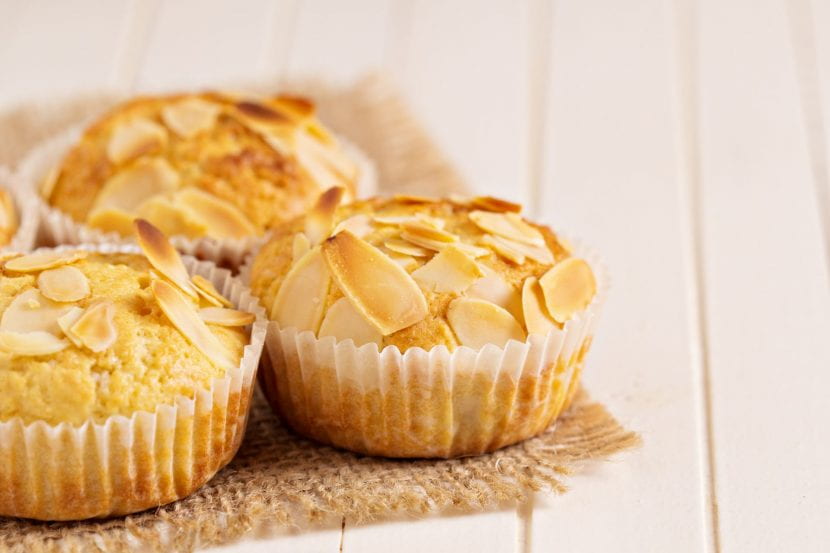
Muffins are often found among the array of baked goods in coffee shops. Compared to other baked goods, they seem to make a healthier breakfast. However, with their large serving size and ingredients (including added sugar), they might not be as healthy as you think. There are several changes to make healthful and flavorful muffins at home.
Rethink the Portion Size
Keeping portion size in check is the key to a well-balanced healthy diet. Refer to our previous post for general tips on portion control. For muffins, you can make mini muffins by filling only half way in the standard-sized muffin tin.
Go with Whole Grain
There are different types of whole wheat flour you can use in recipes. Some examples are whole wheat pastry flour, white whole wheat flour (which is also whole wheat, just made from a different type of grain), and cornmeal. You can use whole wheat flour to replace up to half of the all purpose flour in the recipe without affecting taste or texture.
Try Bean Flours
Beans are high in fiber and protein. Bean flours such as chickpea can be used in recipes to add more flavors and nutrients. You cannot exchange them one-for-one with grain flours. You might need to experiment with them or find recipes that use those flours.
Use Vegetables of Fruits
Fruits and vegetables provide different nutrients. When added to baked goods, they can also enhance flavor and help you cut back on other ingredients, such as added sugar. Some examples include applesauce carrot muffins and cranberry orange muffins.
Cut the Sugar
You can cut about 25% of the sugar in recipes without noticeable differences in flavor or texture. You can also use other ingredients instead of white sugar to give the pleasant sweet taste of muffins. Fresh or dried fruit or fruit puree and sweet spices are some examples.
Use the Healthful Plant Oils
Use healthful plant oils, such as canola or other vegetable oil, instead of butter to reduce saturated fat. Avoid replacing all of the butter with oil since it can impact texture and flavor.
Add Nuts
Add chopped nuts, nut butter, or some nut-based milk to muffin recipes to add extra protein and healthy fat.
Use Alternative Dairy Products
Use low fat dairy products, such as Greek yogurt or buttermilk, to replace whole milk. It helps replace saturated fat with healthy fat.
Here is a delicious lemon chickpea muffin recipe that can be paired with fresh fruit or yogurt for breakfast or a snack.
Adapted from Harvard Chan Cooks
Prep: ~40 mins
Serving: 1 muffin
Ingredients:
For Batter:
- 1 15 oz. can chickpeas, drained and rinsed
- 1 Tbsp lemon zest
- 1 Tbsp orange zest
- 2 Tbsp fresh lemon juice
- 2 Tbsp fresh orange juice
- ¼ cup extra virgin olive oil
- ¼ cup granulated sugar
- 2 egg yolks
- ⅔ cup whole wheat flour, sifted
- 2 tsp baking powder
- ½ tsp salt
- ½ tsp ground cardamom
- ⅓ cup ground almonds
- 2 egg whites
For topping:
- 1 Tbsp ground or slivered almonds
- ¼ tsp ground cardamom
- ½ tsp granulated sugar (optional)
Instructions:
- Preheat the oven to 325°F. Line muffin tin with paper liners.
- Use a blender or a fork to puree the chickpeas until smooth.
- Add the lemon and orange zest, juice, olive oil, sugar, and egg yolks. Puree until smooth.
- Sift together the flour, baking powder, salt, and cardamom. Stir in the chickpea mixture, and then add the ground almonds.
- Whisk the egg whites until they hold semi-soft peaks. Fold the egg whites into the batter carefully.
- In a small bowl combine the ground or slivered almonds, sugar (optional), and cardamom. Set aside.
- Scoop about ¼ cup of batter for each muffin. Sprinkle the batter with some of the almond-cardamom mixture.
- Bake in the oven for 12 to 13 minutes, or until a toothpick inserted in the center of a muffin comes out clean.

Let us know what you think about the recipe. You can also share your own healthy muffin recipe with us in the comment section below.

